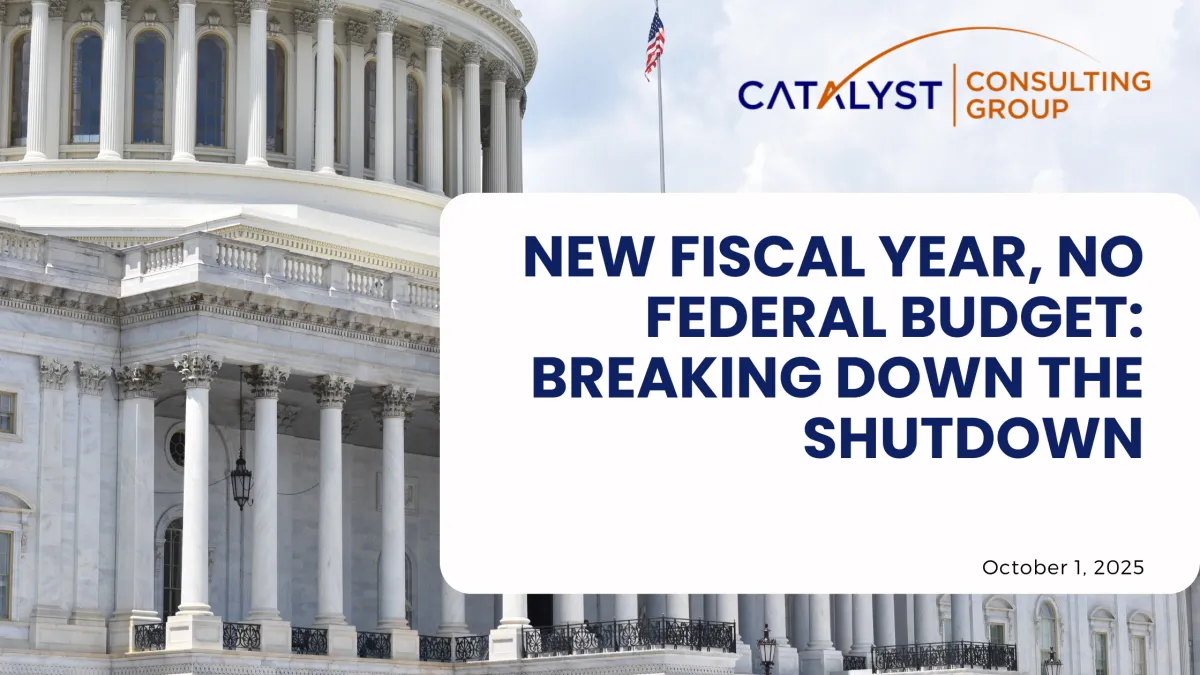FY2025 in Review: Key Takeaways and the Road Ahead for Federal Furniture Sales
Welcome back to Catalyst Conversations! In our latest session, Michelle Warren, along with Catalyst experts Ryan Hay and Dan Conaty, analyzed the close of Fiscal Year 2025 and looked ahead to the trends and opportunities defining FY2026. The good news? Despite a significant government shutdown, the federal furniture market is poised for stability and new growth, but vendors must adapt their strategies.
The $100,000 Question: How the Micro-Purchase Threshold is About to Change Everything in Federal Contracting
In a recent discussion, our team—led by Michelle Warren and featuring former GSA Chief of Integrated Marketing Robin Zickgraf and Catalyst's Ryan Hay—dove into the monumental, often-overlooked federal Micro-Purchase Threshold (MPT). The MPT dictates the ceiling for simplified acquisition, allowing government agencies to bypass red tape and make quick, credit card-based purchases. This seemingly small detail has an enormous impact: "There are over 500,000 transactions annually that are done under this micro-purchase threshold”, accounting for "$18 billion in annual federal spending" (Michelle Warren). For the furniture industry alone, Michelle estimates that "$240 million in furniture today" is done under these guidelines, a number poised to grow significantly.
Expanding Opportunities: Selling to the Non-Profit Market Through Cooperative Contracts
This month, special guest Corey Imhoff with OMNIA Partners joined us as we dove into a critical topic for expanding your sales: selling to the non-profit market using cooperative contracts. Many organizations in this space operate on tight budgets and with lean teams, making them a prime audience for the efficiency and savings offered by cooperative contracts. Understanding the Non-Profit Market It's important to differentiate between non-profit and not-for-profit. While both do not distribute profits to owners, their missions and structures differ. Non-profit organizations serve the public good. They include charities, educational institutions, religious groups, and hospitals. Revenue earned is reinvested directly into their mission. Non-profits can have paid staff and often have tax-exempt status under the IRS 501(c)(3) code, allowing them to accept tax-deductible donations.
New Fiscal Year, No Federal Budget: Breaking Down the Shutdown
As we wake up this morning, October 1st, we celebrate the new fiscal year but unfortunately the Government is shut down. Since the federal fiscal budget was not passed by end of day yesterday and the Constitution requires Congress to approve spending, without a budget or a continuing resolution many federal government activities legally cannot continue. So, what does that mean? In short, it does not mean the entire government stops, but it does mean non-essential services halt, federal employees and contractors face pay delays, and many day-to-day functions of government pause until funding is restored.




